OnePlus 5 vs LG G6
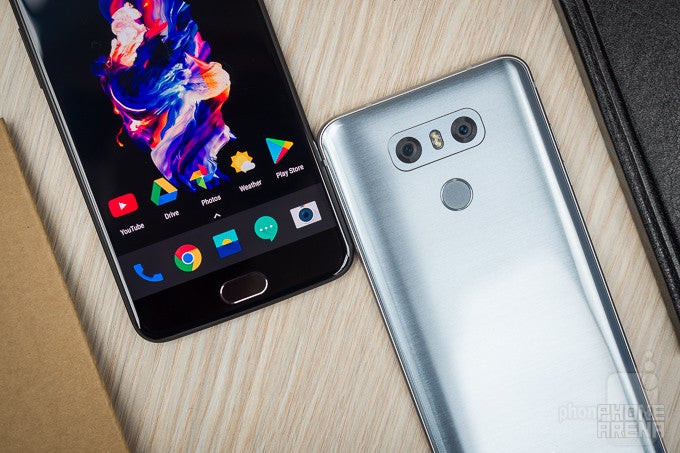
Introduction
Let’s say that you’re looking for a new Android phone, and around $500 is all you’re willing to spend. Until recently, one of your best options would have been the LG G6 – a feature-packed, water-resistant handset with attractive design and a versatile dual-camera setup at the back. But now there’s also the OnePlus 5 to consider within this price range. It may not be as flashy as the G6, but assets like the top-notch hardware specs and the dual-camera arrangement make this one of the best value-for-money Android device money can buy right now. So, which one should you go for: the LG G6 or the OnePlus 5? May this comparison guide you forth.
Design
The LG G6 easily stands out with its appearance and compact form.
There’s quite a lot that sets these two phones apart, and the way they’re built is on the list. As implied in the paragraph above, the LG G6 is the more visually attractive of the two phones – not only thanks to its glass and metal construction, but also because its screen fills more of its front side, giving it a more modern look. Plus, the G6 is physically smaller and narrower, which makes it more manageable in the hand, despite the larger screen diagonal size.
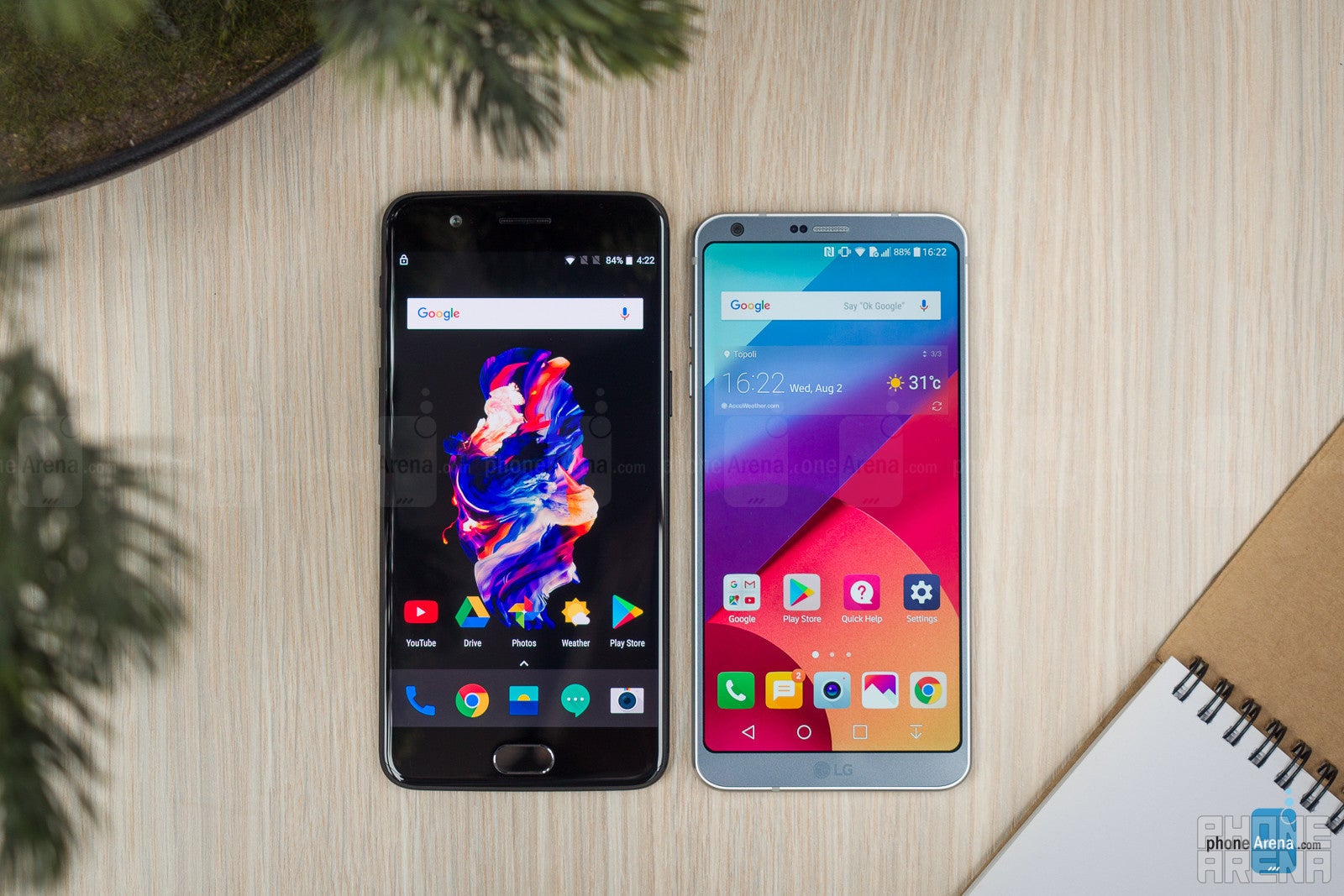
Next to LG’s flagship, the OnePlus 5 appears uninspiring and unoriginal, but it is also stealthier and less flashy, and I’m sure plenty of folks are into that kind of look. In addition, fingerprints don’t stick to it as they do to the G6’s glass back.
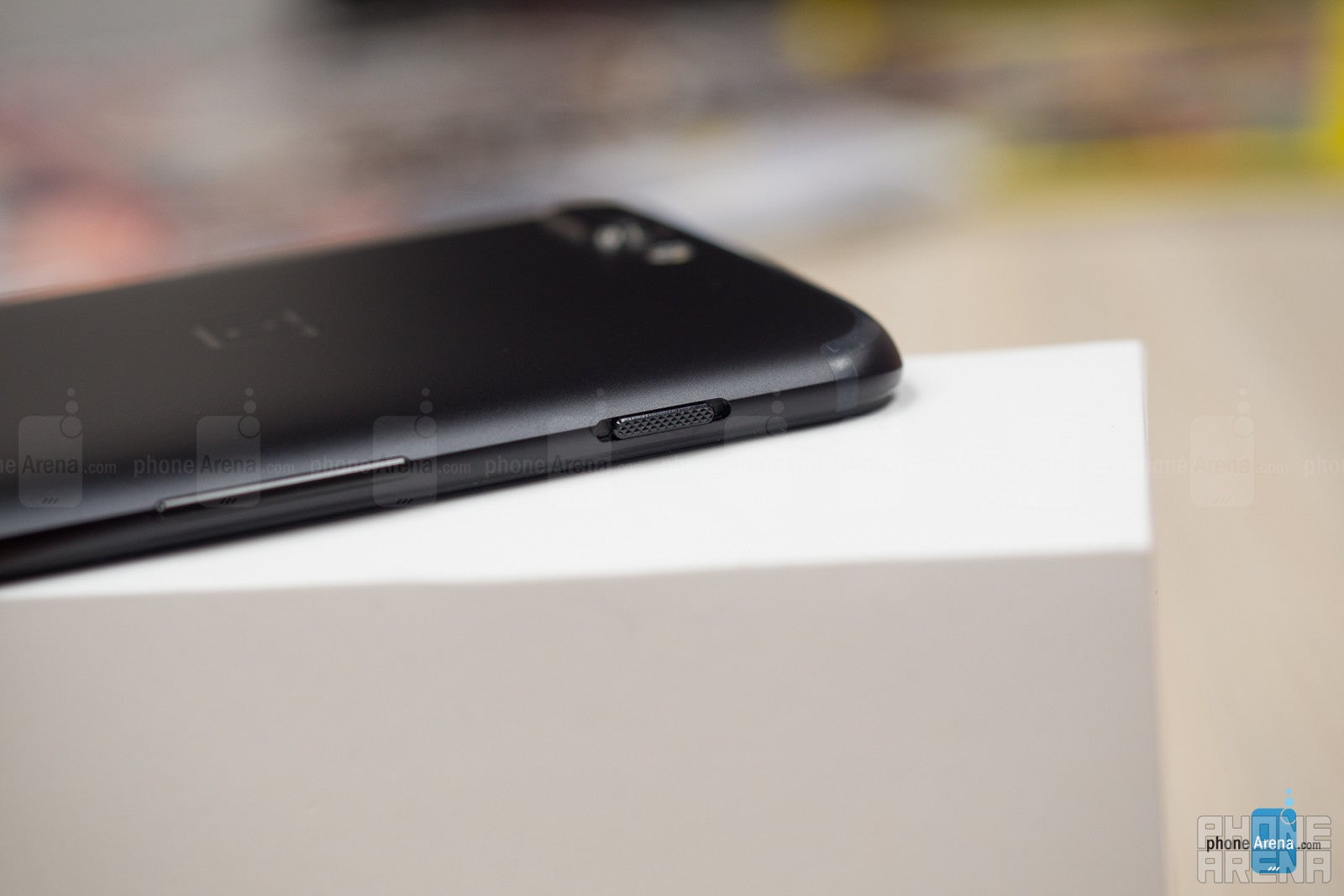
OnePlus 5's slider switch
And speaking of perks, the LG G6 has a few of its own. It is a water-resistant, IP68-certified phone, so it safely used in the rain and for taking awesome pool party shots. The OnePlus 5 is not certified for resistance against the elements, so you have to be more careful with it when near liquids.
Both phones feature fast and accurate fingerprint scanners, but while the G6’s is on the back, the OnePlus 5 retains its placement at the front. Both solutions get the job done, but having a front fingerprint reader would appeal to a greater audience.
Display
Expect a better viewing experience from the G6, with none of that jelly scrolling.
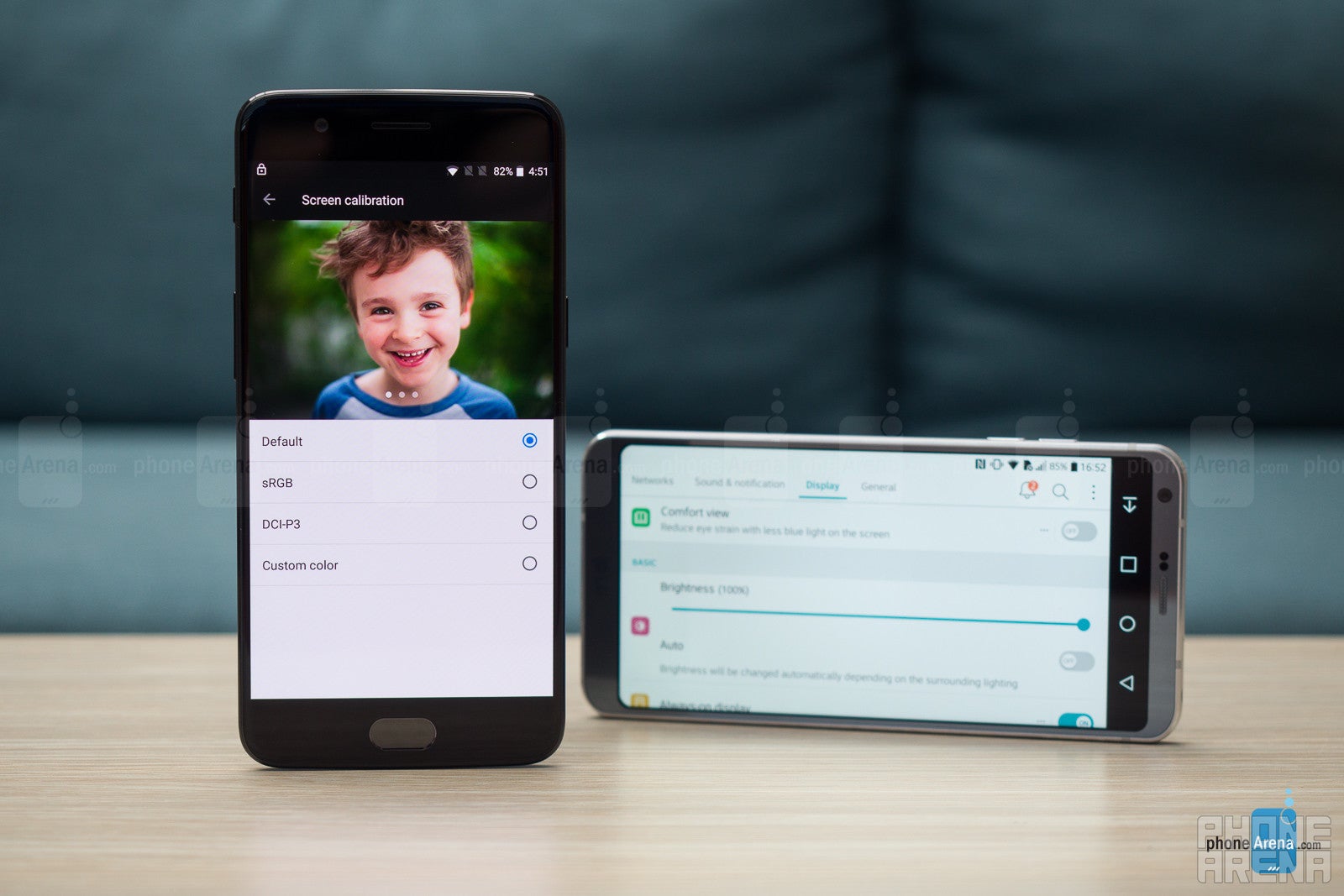
As mentioned above, the LG G6 is more compact and easier to operate than the OnePlus 5. This has been achieved through adopting an unconventional screen aspect ratio – 18:9 instead of the more traditional 16:9 seen on most other phones. Or in other words, the display on the G6 is taller, yet narrower than the one on the OnePlus 5, and more of its area is easier to reach with a single thumb. This helps with activities like on-the-go typing or web-browsing, but the experience of watching online video suffers, as most content isn’t made to fill the G6’s screen entirely.
Aspect ratio aside, both displays pack plenty of pixels and deliver crisp images. Although the G6’s screen produces more detail thanks to its greater resolution – 1440x2880 vs 1080x1920 pixels on the OP5 – the difference is barely noticeable with a naked eye. What is easier to notice is that colors are punchier on the OnePlus 5’s AMOLED display. While I’m sure most users would be fine with that, there’s an option in the settings menu allowing you to switch to a tamer, more accurate color profile. Colors on the G6’s IPS LCD screen do have some punch added to them, but are generally likeable. Whites could have been less blueish, however.
“But what about the ‘jelly effect’ on the OnePlus 5?”, some might ask. The flaw is there indeed, and no software update can fix it, so scrolling on the OnePlus 5 isn’t as fluid as it is on the G6. But I wouldn’t call this a deal breaker in any way.
Outdoor visibility is a display property all of us care about. While none of the two phones excel in this respect, they remain usable even under direct sunlight, with the G6 being slightly better at that. Also, both phones feature blue light filter modes for night-time use.
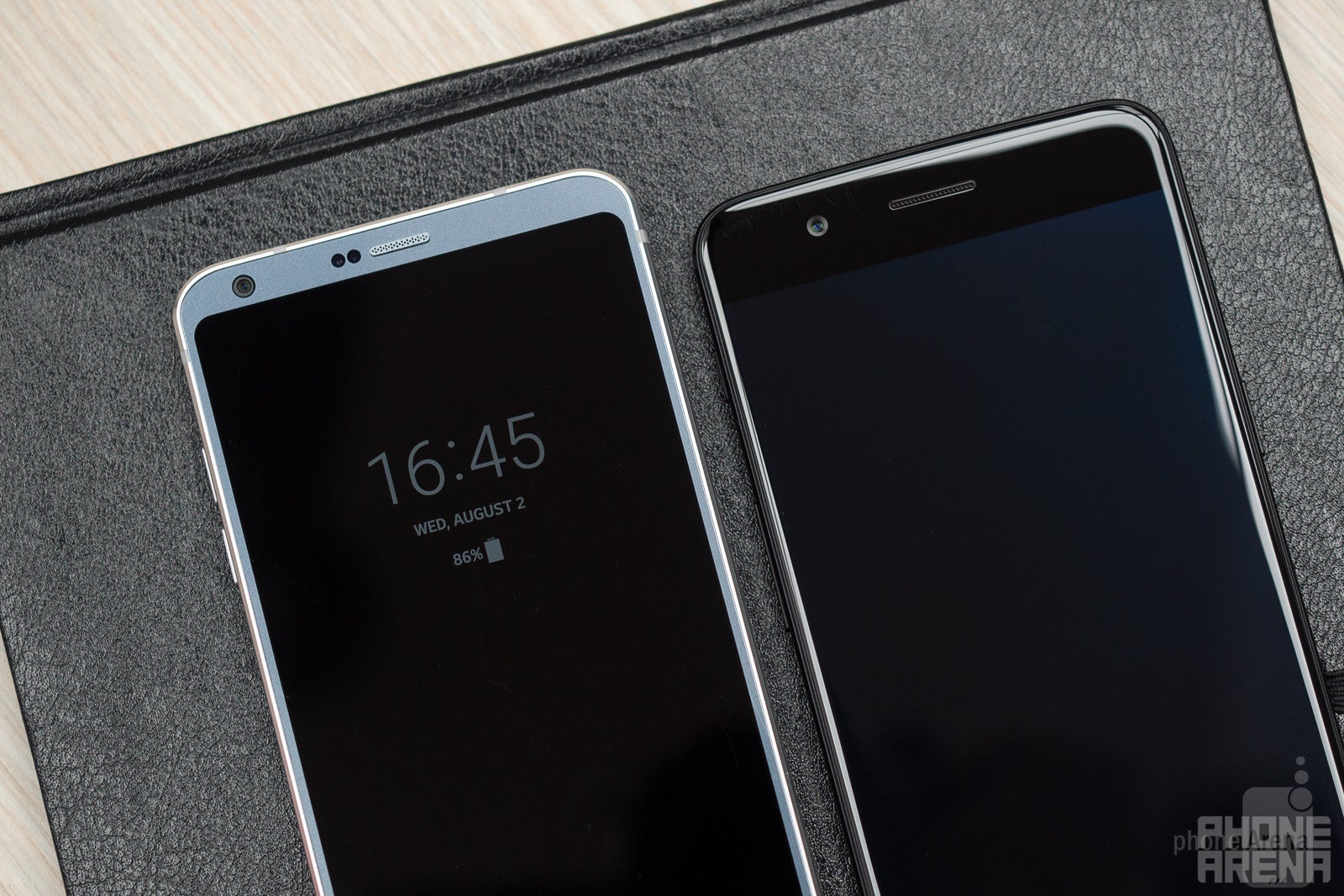
LG G6's always-on display feature
Software and interface
The OnePlus 5 is a tinkerer's device, while the G6's software feels better polished.

Both phones run Android 7 Nougat – customized versions of it, to be more precise. And they’re quite different in many ways, including how they look and how they function.
Visually, the interface of the LG G6 is brighter, more colorful and overall very inviting. Attention has been paid to little details: home screen icons are of the same shape, fonts are sharp and clearly legible, and the signature wallpaper took weeks of designing until it looked just right. In contrast, grey, white, and black visuals dominate the OnePlus 5’s interface, along with an accent color that you can pick – not the most cheerful combination, really. And perhaps more time could have been spent on fine-tuning and polishing: app names, for example, don’t always fit (e.g. Amazon Kindle gets shortened to Amazon Kin..) and may not be easy to read against the stock wallpapers chosen by OnePlus.
When it comes to functionality, one of the first things you notice about the G6 is the absence of an app drawer by default (it can be re-enabled). The phone takes an iOS-like approach by placing all installed apps on your home screen, and we have nothing against that. On the OnePlus 5, the app drawer is accessible with a swipe up, much like on a Google Pixel or any recent phone running a “clean” version of Android.
Navigating the Android software is done via on-screen buttons on the LG G6. These can be rearranged to your liking and you may even enable a super-handy button that pulls down your notifications shade. The OnePlus 5, however, gives you greater flexibility, as you may either use on-screen keys or the physical capacitive buttons below the display, where the fingerprint scanner functions as your “Home” key. Moreover, various shortcuts can be assigned to these keys and triggered by long-pressing or double-tapping. Surely that would be too much for regular folks to deal with, but power users will find these options pretty neat.
A few more things: the OnePlus runs Android 7.1.1, which makes it the more up-to-date phone as the G6 is still on 7.0 as of this writing. On the other hand, the G6 is expected to get a software update soon which will add extras like facial recognition security and improved power management.
Processor, memory and performance
The G6 may be fast, but the OnePlus 5 flies when it comes to responsiveness and gaming performance.
On the hardware front, the LG G6 comes with last year’s Snapdragon 821 SoC and 4GB of RAM, while the OnePlus 5 sports the newer Snapdragon 835 alongside up to 8GB of RAM. Neither of the two is slow by any means – whether you’re playing games or scrolling through your Twitter feed – but after using both for extensive periods of time, I’d say that the OP5 is a bit faster, especially when switching back and forth between apps. Seriously, sometimes I get back to a game that I was playing a day ago only to find it in the state I left it! Also, graphics-intensive games run at higher framerates on the OnePlus 5 – thanks both to its faster GPU and lower display resolution.
Storage space on the LG G6 stands at 32GB, unless you live in Korea where a 64-gig model is sold. It can be expanded through the use of a microSD card, although that solution isn’t perfect since removable cards aren’t as quick as built-in storage. The OnePlus 5 comes with 64 or 128GB of on-board, non-expandable storage.
Camera
Zoom or wide-angle? It's your choice!

While both phones come with dual cameras at the back, their secondary cameras serve very different purposes. The G6 comes with two cameras of 13 megapixels, the secondary employing a wide-angle lens that fits a much greater portion of the scene at the cost of distortion and less light sensitivity. The OnePlus 5 has a 16MP main camera and a 20MP secondary one adding 1.6x optical zoom and Portrait Mode similar to the one on the iPhone 7 Plus.
All in all, both approaches have their pros and cons. While lossless zoom is great having on a phone, the G6’s wide-angle camera is hard to beat in tight spots. Picking one over the other depends on what kind of photos you tend to take and what situations you find yourself in. For instance, I’d much rather take photos of tasty meals using the OnePlus 5, but on a recent trip to Paris, the G6’s wide-angle cam allowed me to capture epic shots while exploring the city’s landmarks and museums.
Image quality
When it comes to image quality, both phones are in the same ballpark – not perfect, but adequate for the price tier. Comparing images out of their cameras side by side it becomes clear that LG’s flagship oversharpens images, but ultimately, it isn’t rare to see it bringing out more detail out of the scene, especially near the corners of the frame. More importantly, with the G6 I’ve had less shots spoiled by a shaky hand, as its main shooter has optical image stabilization. On the other hand, the OnePlus 5 tends to use its HDR more frequently, and the results are usually better compared to HDR shots out of the G6. As far as color accuracy is concerned, the OnePlus 5 favors warmer tones, while the G6 hovers between cold and neutral look.
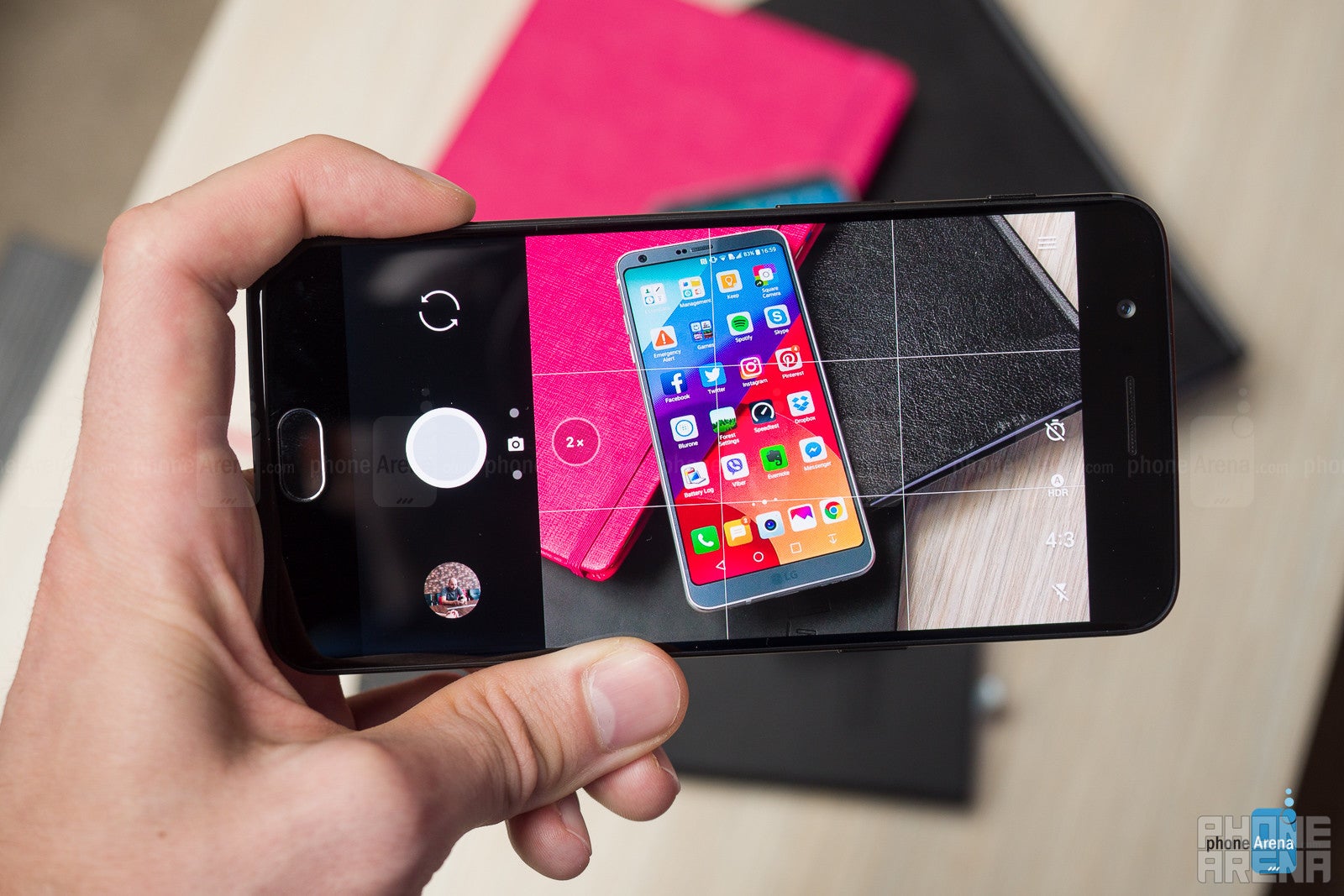
In low-light situations, the G6’s superiority is pretty clear. Its photos are clearer and more detailed, surely thanks to the fact that OIS lets it absorb more light without motion blur. Still, the OnePlus 5’s night-time shots are also usable and generally likeable, as long as you don’t zoom in too much.
One important note should be made here: both phones’ secondary cameras tend to struggle in low light due to their narrower apertures limiting the amount of light that gets in. In fact, the OnePlus 5 won’t use its zoom camera at all if it encounters a scene that’s too dark. The G6’s low-light wide shots could be noisier, but at least the camera is at the user’s disposal.
Selfie quality
Looking at image quality alone, neither phone’s front camera managed to impress us. Their selfies turn out decent, but nothing more. In dark environments, both phones may use their displays as a flash replacement, but the photos still turn out quite soft and uninspiring. And despite the stark difference in megapixels – 16 for the OP5 vs 5 for the G6 – the difference in clarity is only marginal.
But the LG G6 has a trick up its sleeve. Its front camera has an extremely wide viewing angle, allowing you to fit a whole lot more than your face in the shot. The tradeoff – GoPro-like distortion spoils the photo, but I’d say that the results are worth it. Keep in mind that while the stock camera app lets you switch between normal (non-distorted) and wide selfies, the camera operates in wide mode only during video chats.
Video quality
The situation isn’t much different here. The G6’s videos have plenty of sharpness added by the camera’s software, but are clearer overall. At 1080p resolution, both phones stabilize the image so that it is a bit more pleasant to watch. The OnePlus 5 appears to be faster with its focusing, however. Curiously, using its zooming capabilities doesn’t seem to have any positive effect on video quality, as it looks on par with digitally zoomed video out of the G6.
When we switch to 4K, the G6 uses OIS to keep the frame somewhat steady, so video is a bit more pleasant to watch than what the OnePlus 5 captures. But the latter is about to get a software update that will add electronic stabilization to this resolution mode.
Low-light video out of the LG G6 doesn’t turn out particularly great, but it does look better than what the OnePlus 5 produces – it is brighter and with more details in the shadows.
Multimedia
Do you watch a lot of YouTube videos? In that case, the OnePlus 5 is the better option. With its traditional display aspect ratio, most content fills its entire screen, while the G6 leaves black bars on both sides in most videos. On the other hand, only the LG G6 will let you watch fancy HDR10 and Dolby Vision HDR videos through Netflix or Amazon Prime Video.
Both phones come with a single down-firing speaker at the bottom. Both get sufficiently loud, but don’t shine with anything in particular in terms of quality. One slight difference is that the OnePlus 5 is somewhat louder in the mid-range, which makes speech louder, but music not quite enjoyable to listen to.
One important note: while the LG G6 comes with a pair of decent wired earphones in the set, the OnePlus 5 doesn’t have any included. Both phones feature 3.5mm headphone jacks, in case you’re wondering.
Call quality and connectivity
After using the LG G6 and OnePlus 5 extensively as daily drivers, I’d say that they deliver solid sound quality during calls. Both sound pretty good on the other side of the line as well.
As far as carrier availability goes, the LG G6 can be bought from any major US carrier. In contrast, the OnePlus 5 is only sold unlocked via the company’s online store, and it only works well on GSM networks, such as that of AT&T and T-Mobile. For those that demand the feature, the OP5 is a dual-SIM device.
This would be a good time to point out that I’ve been experiencing better GPS connectivity with the G6, especially indoors. Wi-Fi signal strength also tends to be poorer on the OnePlus 5. Of course, the OP5 can use both Wi-Fi and locations services just fine, but with both, reception on the G6 has been better in my experience.
Battery life
The OnePlus 5 is a step ahead, with 2-day battery life realistically achievable.
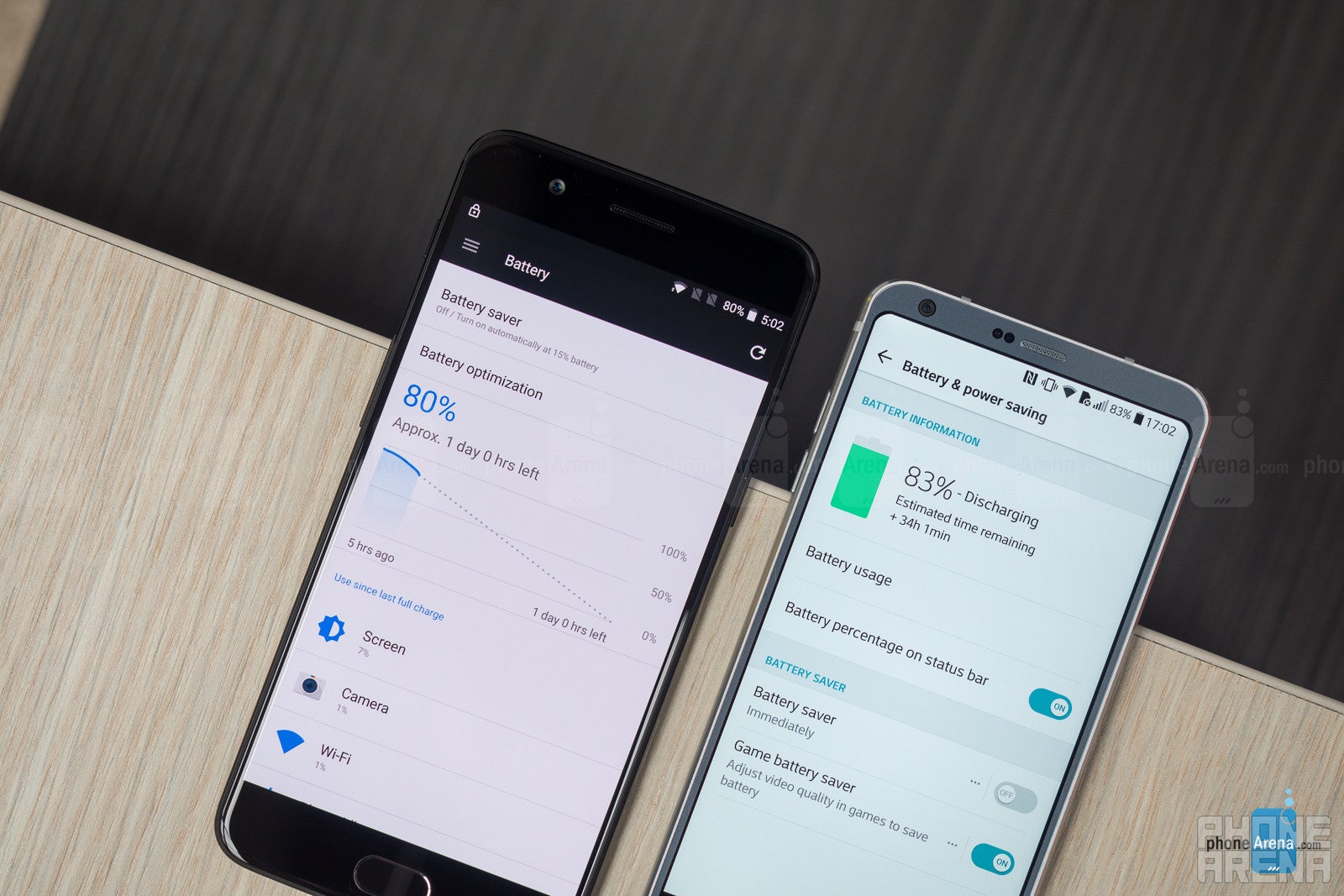
Both phones come with pretty similar, 3300mAh non-removable batteries. However, how long a phone lasts between charges depends greatly on how it is used, not only on how big of a battery it holds.
As a daily driver, the OnePlus 5 can realistically last two days on a single charge with moderate usage. Using the G6 in the same manner will get you through about a day and a half at most. This could be due to the more energy-efficient system chip used in the OP5, or due to the fact that its AMOLED display sucks very little power when displaying blacks and dark colors, which dominate its interface.
OnePlus takes pride in Dash Charge – the quick-charging technology found on its latest flagship. It is fast indeed, but there’s a catch: it only works with the charger and cable provided by OnePlus. Losing one or the other means you can’t enjoy quick-charging anymore. The LG G6 supports Qualcomm’s QuickCharge 3.0 tech, which is compatible with a range of third-party chargers and cables, all while being just as fast, more or less.
One notable feature: the LG G6 sold in the US supports wireless charging. The OnePlus 5 does not.
Conclusion
These here are two very different beasts, both very much worth owning at the price of around $500 they currently go for. But depending on what kind of user you are, one could be better suited for your needs than the other.

Another would be that the LG G6 seems like the “safer bet”, seeing how many issues arose around the OnePlus 5 soon after its launch – the jelly scrolling effect, connectivity issues, battery drains, and the critical flaw that prevented some users from dialing emergency numbers. Most of these have been fixed, thankfully.
Still, the OnePlus 5 wins on the hardware front, as it is the better-equipped phone. It is the faster of the two and delivers longer battery life, not to mention that it is more spacious in terms of storage.
And when it comes to camera performance, both phones take perfectly decent photos and videos. Just keep in mind that while the OnePlus 5’s zooming and portrait capabilities seem more practical and useful in a broader range of situations, the LG G6’s camera arrangement also holds plenty of potential.
OnePlus 5
Pros
- Fast in both theory and practice
- Longer battery life
- Dual camera with useful zooming capabilities
- More on-board storage
- Quick charging
- Dual SIM capabilities
LG G6
Pros
- More compact
- Easier to use with one hand
- Water-resistant
- Dual camera with extra-wide lens for the times you need one
- Quick charging
- Available on any major US carrier
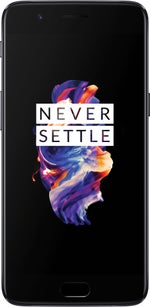
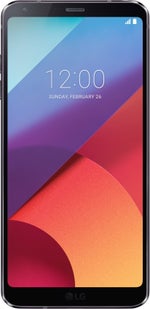
























Things that are NOT allowed: